

Max Davies
2025 BYD Shark 6 review
23 Days Ago
The Mazda BT-50 SP offers an SUV-like look and, with the optional suspension upgrade, an SUV-like ride.
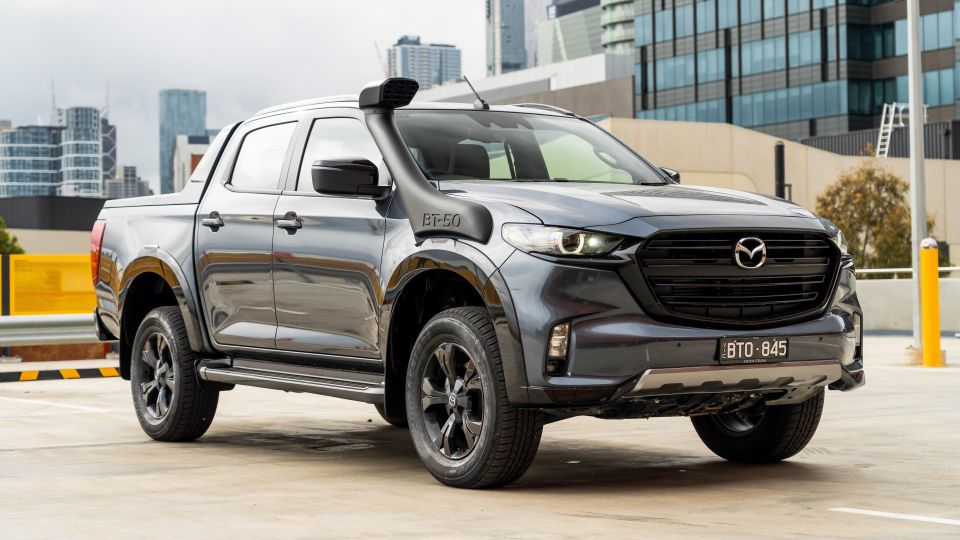
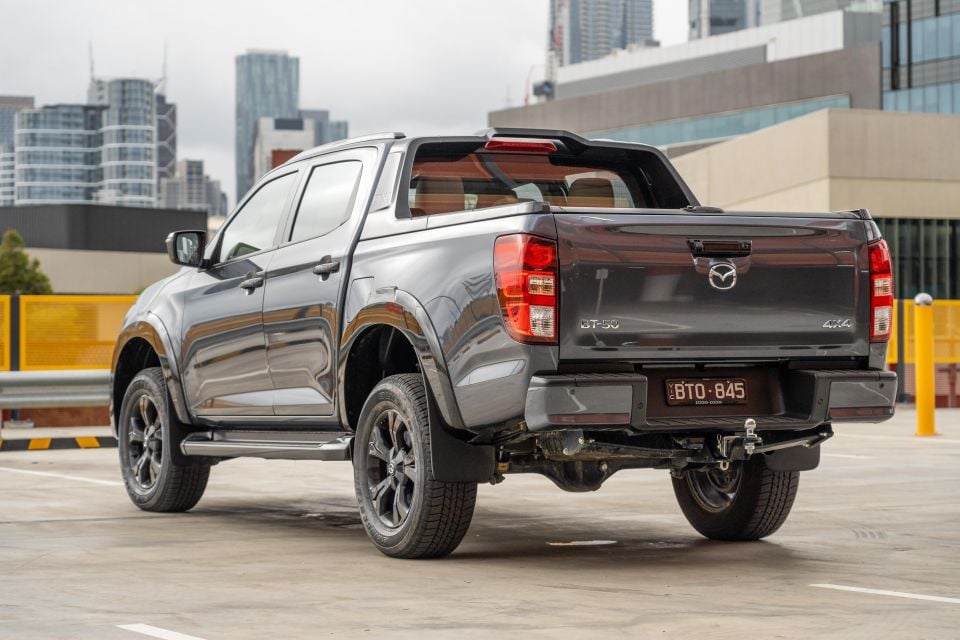

Quickly see how this car stacks up against its competition. Select any benchmark to see more details.
Where expert car reviews meet expert car buying – CarExpert gives you trusted advice, personalised service and real savings on your next new car.
We already thought the new Mazda BT-50 looked like a bit of a city slicker for a ute.
It’s based on the Isuzu D-Max, but its frontend styling owes more to Mazda crossovers like the CX-9. While the likes of the Nissan Navara Pro-4X Warrior and Toyota HiLux Rogue go for a more butch look, the BT-50 looks a little more, dare we say, elegant.
The SP builds on that, offering the kind of aesthetic enhancements found in SP versions of Mazda’s car and SUV range.

These include gloss black mirrors, fender flares and alloy wheels. A black sail plane adorns the rear, while there’s also a standard roller shutter for the tub.
All that gloss black is seemingly more likely to show up the scrapes and scratches often acquired during vigorous off-roading.
And then there’s the interior, finished in black and ‘Driftwood’ (a tan/light brown colour), giving the BT-50 a less rugged and more upscale look inside.
The BT-50 SP is priced at $63,390 before on-road costs with the standard manual transmission, or $66,390 with the optional automatic. That’s are $6000 higher than corresponding GT models.
Drive-away you’re looking at $72,509 based on a Sydney postcode, but that’s before you look at the accessories catalogue. It’s also worth noting Mazda is currently offering the SP auto at $69,359 drive-away for ABN holders and primary producers.
Our tester came with the optional heavy-duty suspension upgraded, tailored for load weights of between 300kg and 600kg. Mazda also offers a medium-duty upgrade designed for loads of 300kg and under. Just $70 separates the two, with the heavy-duty upgrade ringing up at $6790. Our tester also included a $1153 snorkel.
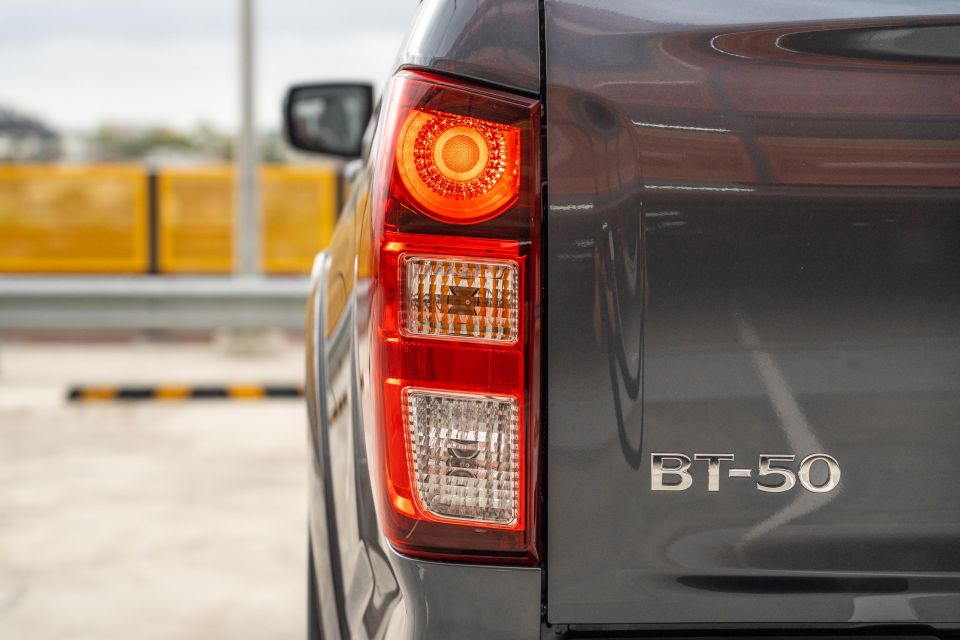
All finishes bar Ice White cost an extra $695. You can choose between True Black, Concrete Grey, Gun Blue, Rock Grey or Red Volcano mica finishes or Ingot Silver metallic.
There’s a wide range of accessories on offer through Mazda, ranging from a $361 wireless charging mat to a $5888 canopy.
With the snorkel and heavy-duty suspension upgrade, the BT-50 SP auto has a drive-away price of $81,104 in NSW. That’s still around $10,000 less than a Ford Ranger Raptor, but it’s certainly getting up there…
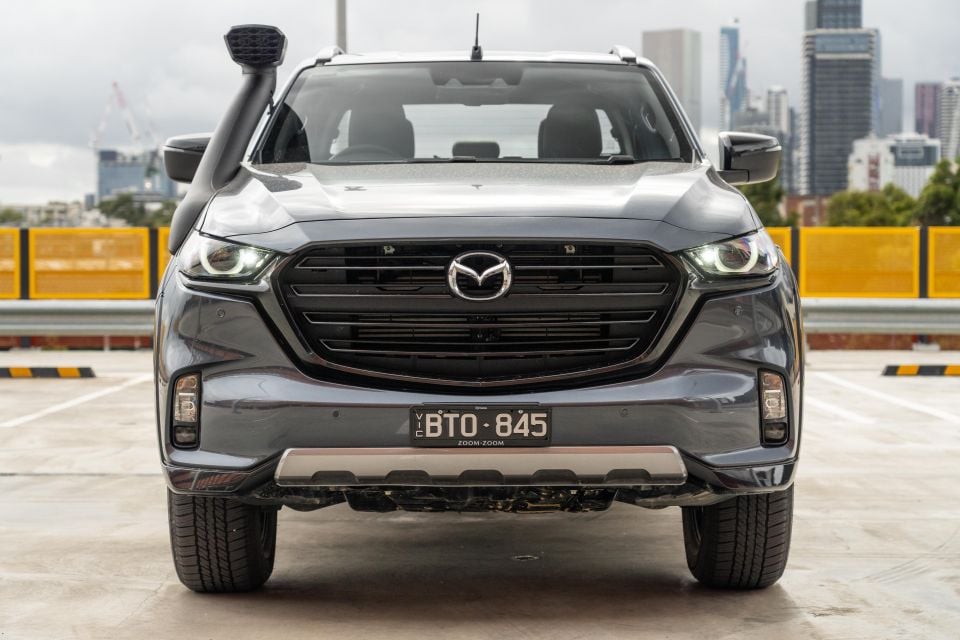
Similarly priced automatic rivals include:
Prices exclude on-road costs
There’s a wide range – pardon the pun – of Ford Ranger variants at this price point as well, from the four-cylinder XLT at $61,190 before on-roads, up to the Wildtrak V6 at $70,190.
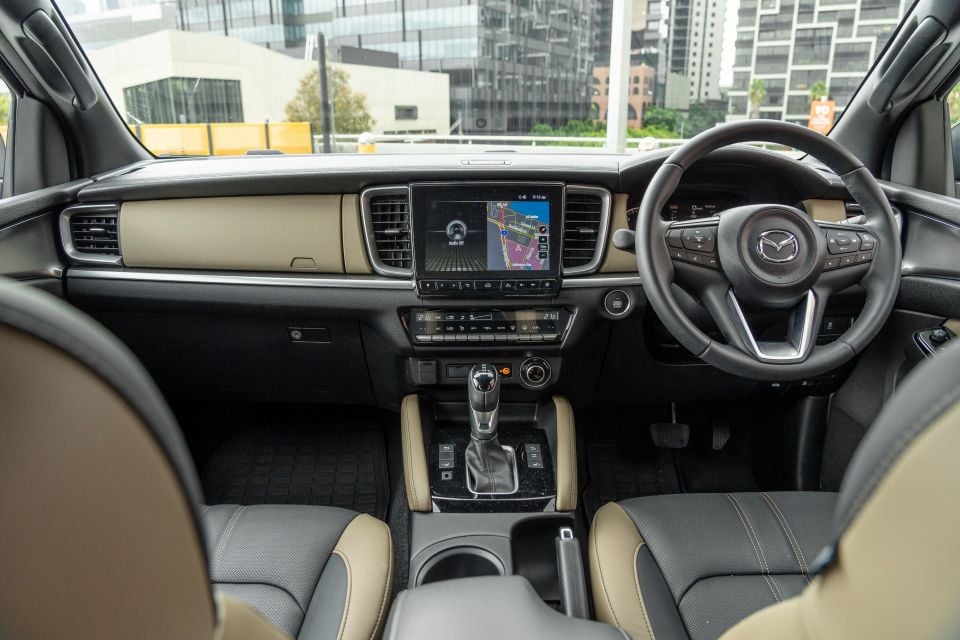
Buy your new car without the stress. It's fast, simple and completely free.

Great service from Travis and team, second time I have used this business would not hesitate to recommend them to anyone
Craig C.
Purchased a Ford Ranger in Sunshine Coast, QLD
CarExpert helped Craig save $7,224 on his Ford Ranger, now let us save you on your next new car.
Get your BEST priceMazda has given the BT-50 SP’s interior a more upmarket look with its black and ‘Driftwood’ colour scheme, with light brown used on the seats, doors and dashboard.
The colourway appeals to me, but then again I’m not the typical target audience for a ute. Light brown trim also seems like an odd choice for a rugged ute, but then the SP is supposed to have a more sophisticated, urban look than say, the flagship BT-50 Thunder.
There may be more colour, but the materials are the same. That means this is one of the nicer ute cabins in this segment, but don’t go thinking this is an American-style luxo-pickup.
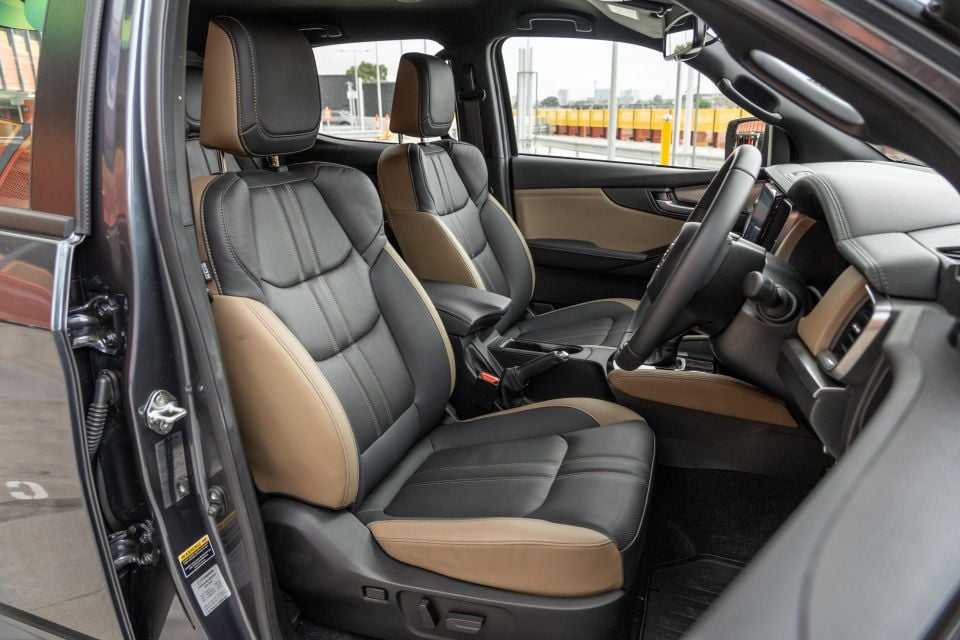
There are stitching details throughout the cabin plus a soft-touch (if thin) covering for the top of the dashboard, as well as leatherette padding for the sides of the centre console. Otherwise, there are the typical hard but hard-wearing plastics common in this segment.
Given the proliferation of full-sized American pickup trucks in Australia, often with more upmarket interiors and creature comforts, there’s probably a market for a more luxed-up BT-50 or rival “standard-sized” ute.
The BT-50 has a slightly different upper dash to the D-Max it’s based on, but these two vehicles’ interiors are otherwise essentially the same.
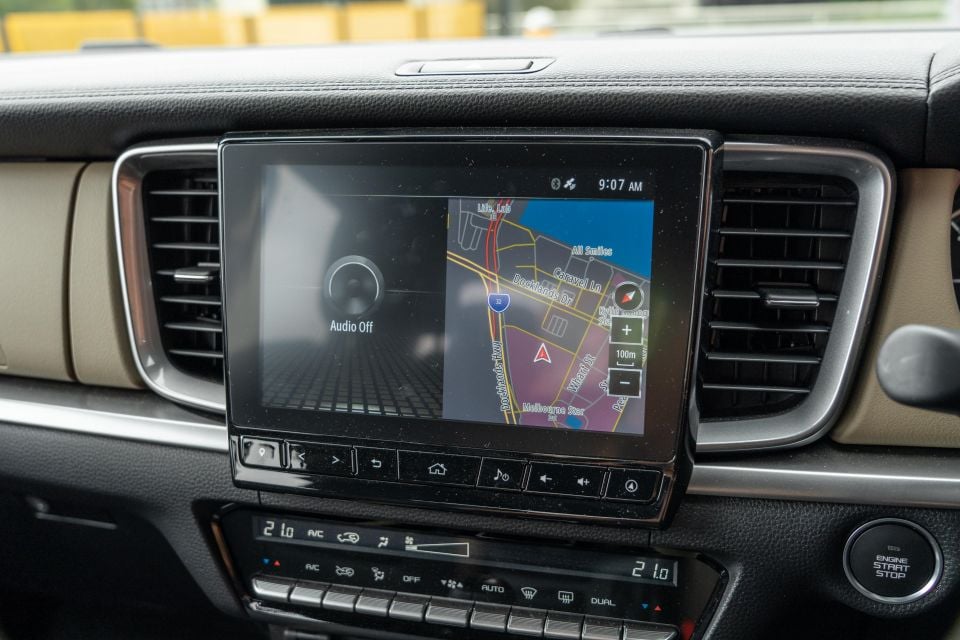
The rocker switches for the climate control look and feel solid and are satisfyingly damped, while the black headliner is nicer than the typical mouse-fur greys you’ll find in this segment.
But lesser BT-50s foibles remain, like a shelf at the base of the centre stack that isn’t rubberised, some mismatched plastics on the doors, and extensive use of piano black trim – including on the doors and centre console where it’s destined to get scratched.
While there’s wireless Apple CarPlay and a decently sized 9.0-inch screen, the BT-50’s infotainment is blown away by the Ford Ranger and its 10.1- or 12-inch touchscreens with their crisper graphics, quicker response times and more intuitive interface.
The BT-50 uses the same user interface as the D-Max, and like the Isuzu it features some physical shortcut buttons underneath the display including a dedicated Home button.
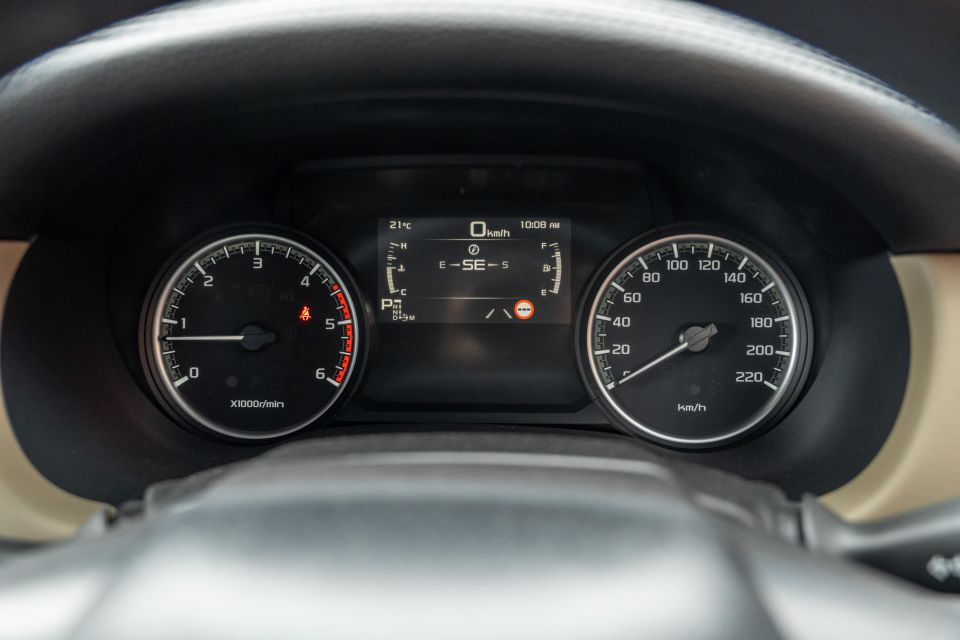
The Mazda’s analogue instruments are a bit more elegant than the Isuzu’s, but the identical information screen between them is too small. Also, unlike most cars, the fuel icon doesn’t point to the side of the vehicle that the filler door is on – a small detail, but an odd one to get wrong.
Storage up front is good, with a fairly spacious centre console bin, dual glove boxes, and bottle holders that can fit 1L bottles. There are two cupholders in the centre console, one squared-off and one round – perfect for when you’re an Ice Break or Dare type of person and your partner or offsider prefers a carton of M.
At the base of the centre stack you’ll find a single USB-A outlet plus a 12V outlet.
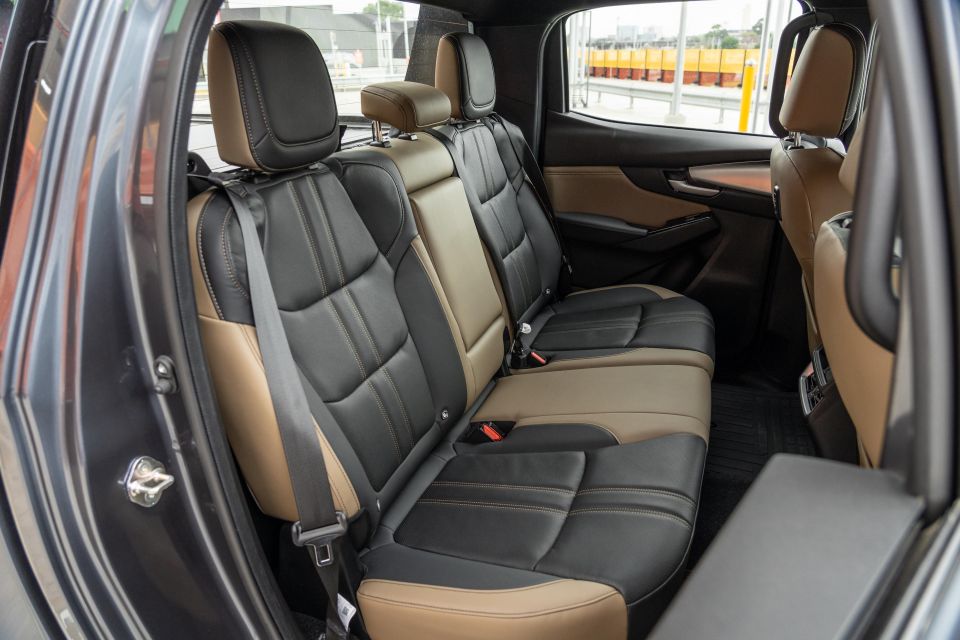

Everything feels solidly screwed together, though we did experience an issue with the leatherette-padded trim piece on one side of the centre console detaching itself. Considering the other wouldn’t budge, we think this could just be an anomaly and not indicative of the typical build quality of a BT-50.
One of our biggest bugbears with the D-Max, the overly narrow footrest, is present in the BT-50. But the front seats are comfortable, with eight-way power adjustment for the driver’s seat and leather and synthetic suede upholstery. The steering wheel also adjusts for reach and rake.
As is often the case with utes, the rear seatback is quite upright which affects long-distance comfort. But there’s plenty of room in the back seat, with ample headroom and decent legroom.
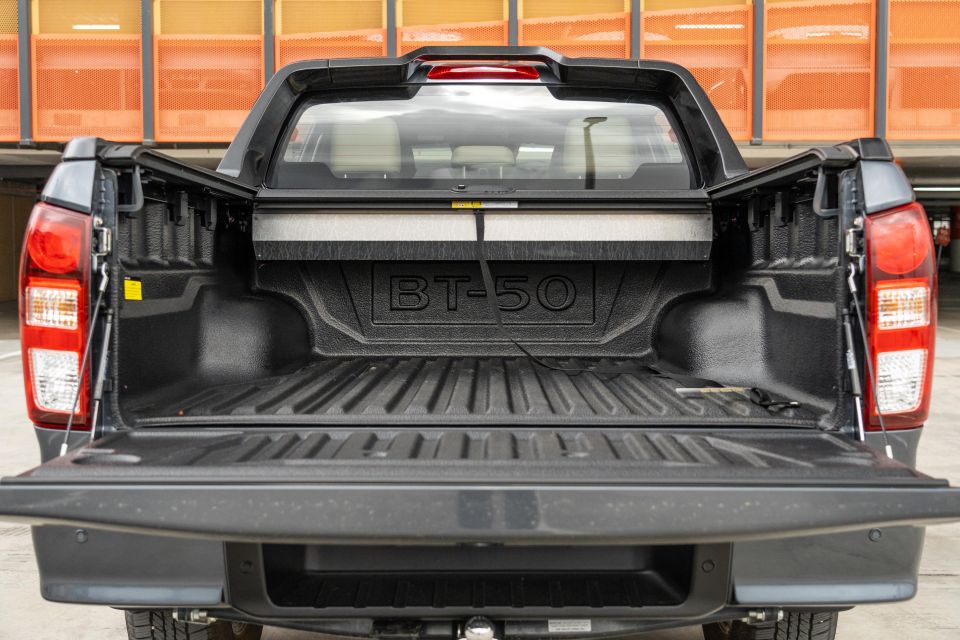
There are rear air vents, map pockets on the soft front seatbacks, plus a single USB-A outlet and a small cubby.
Cupholders can be found in the fold-down centre armrest, while there are two ISOFIX and two top-tether anchor points for child seats. You can also lift up the seat bases to access concealed storage areas.
The tub measures 1571mm long, 1530mm wide (1120mm between the arches) and 490mm deep.
The SP gets a tub liner and a roller tonneau cover, though the latter isn’t power-adjustable as on the Thunder.
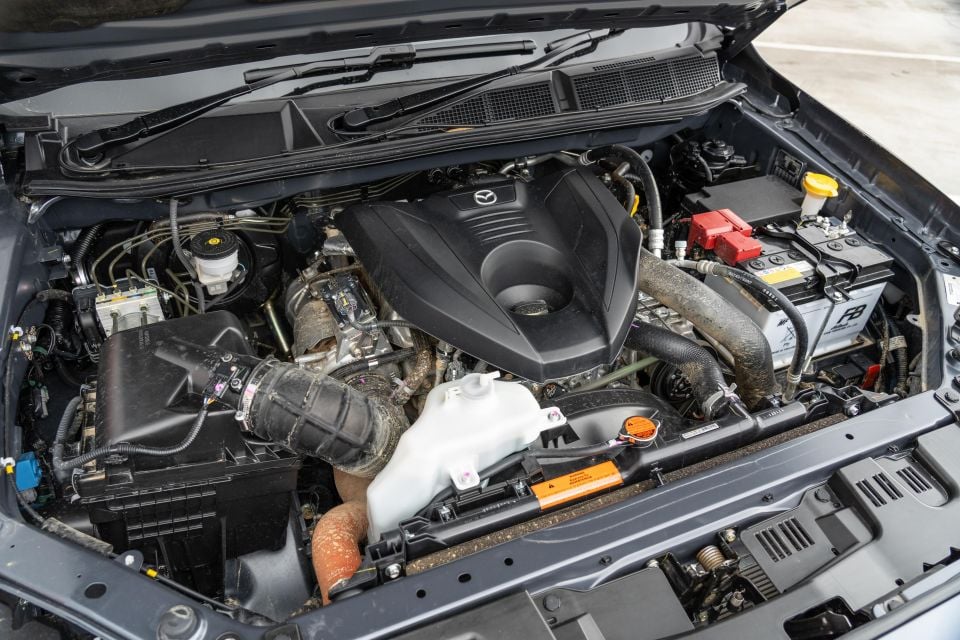
The BT-50 SP is powered by a 3.0-litre four-cylinder turbo-diesel producing 140kW of power at 3600rpm and 450Nm of torque between 1600 and 2600rpm.
It’s mated with either a six-speed manual or, as on our tester, a six-speed automatic transmission.
We recorded a 0-100km/h time of exactly 10 seconds.
The four-wheel drive system offers selectable low- and high-range gearing, though there’s no full-time four-wheel drive mode for on-pavement use as you’ll find in some Tritons and Rangers.
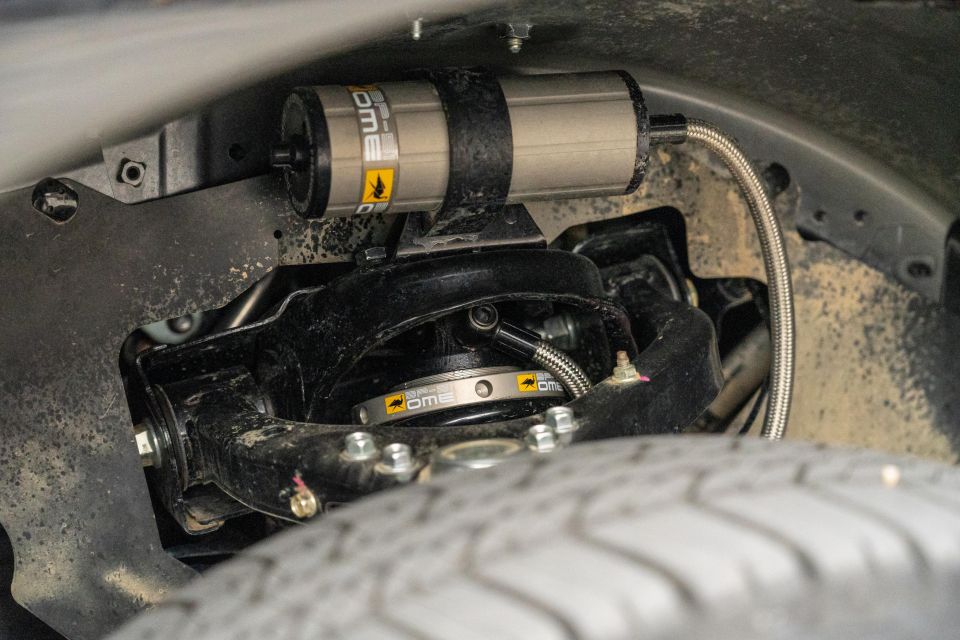
Payload is 892kg, 10kg less than the manual SP and down from 1065kg in the GT. Gross vehicle mass (GVM) is 3100kg and gross combined mass (GCM) is 6000kg. Kerb weight is listed as 2198kg for the manual and 2208kg for the auto.
Like the related D-Max and rivals like the Ranger and HiLux, braked towing capacity is 3500kg.
Over a mix of inner-city, suburban and highway driving, we averaged 8.5L/100km. This increased to 9.5L/100km across over 700km of driving, including daily commuting in the city and some long country drives. The official combined cycle claim is 8.0L/100km.
The BT-50 has a 76L fuel tank.
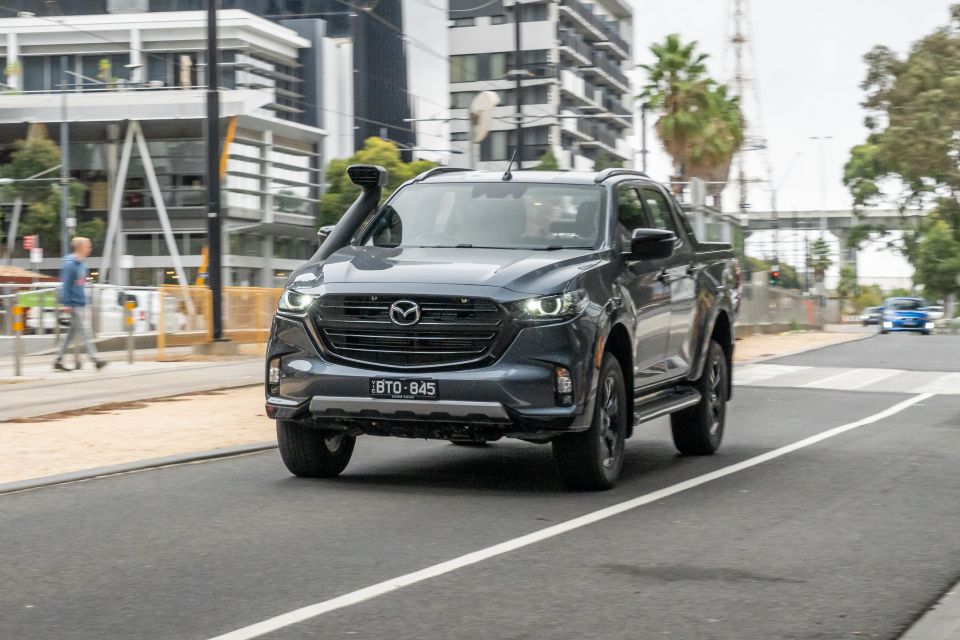
The BT-50 is already a good ute to drive, but the heavy-duty suspension upgrade of our tester elevates it further.
This option includes ARB BP51 dampers with external rebound and compression adjustment, which you can tweak yourself or leave for the dealer to do. The result is, quite simply, SUV-level ride quality even with an empty tub.
The BT-50 proved smooth over all surfaces, from corrugated roads in the country to pockmarked urban streets. We only felt some frame jitter when crossing over tram tracks.
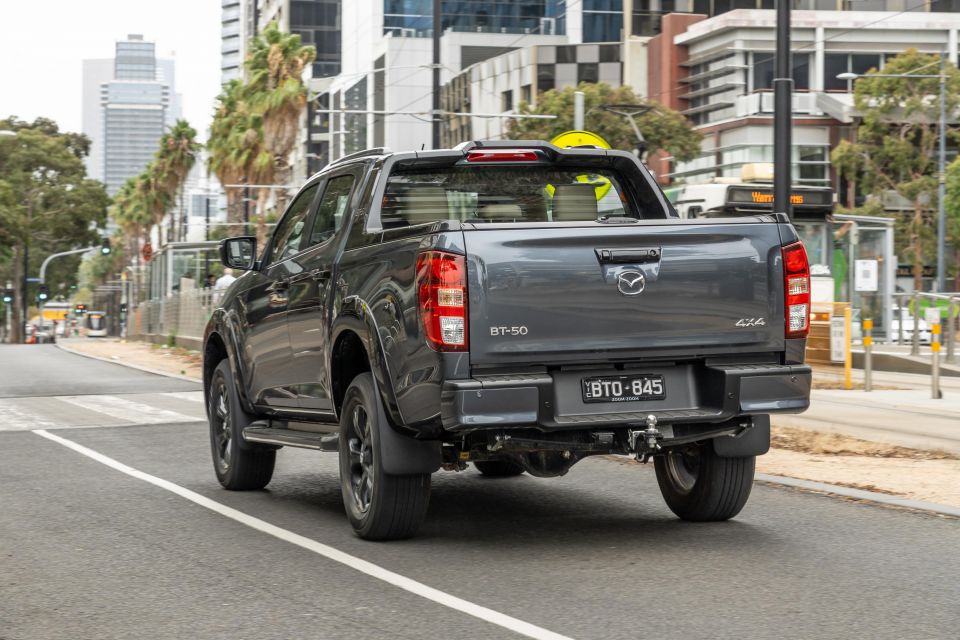
Where expert car reviews meet expert car buying – CarExpert gives you trusted advice, personalised service and real savings on your next new car.
The price to pay for this level of isolation was more suspension travel, with a bit of body movement over undulating roads.
The 3.0-litre turbo-diesel doesn’t feel super quick but there’s plenty of low-end grunt, with its torque swelling in a satisfying way. It works well in concert with the smooth-shifting six-speed automatic.
By segment standards, noise is kept pretty well under control and the BT-50 is smooth at idle. Wind noise and tyre noise at highway speeds is minimal.
Push it and there’s the typical uninspiring ute soundtrack, but driven sensibly the BT-50 proves quite refined for a ute – and with peak torque available from just 1600rpm (up to 2600rpm), you rarely need to work the BT-50 to get the most out of it.

Steering is well-sorted. It’s light enough at low speeds to make manoeuvring easy, but never feels disconcertingly light.
It weighs up nicely and overall feels nice and fluid. The brakes also feel solid, and stopping distances feel on par with key rivals.
With adaptive cruise control, lane centring, a quiet cabin, and a comfortable ride, the BT-50 proved well up to the task of eating up a few hundred kilometres of highways and rural roads.
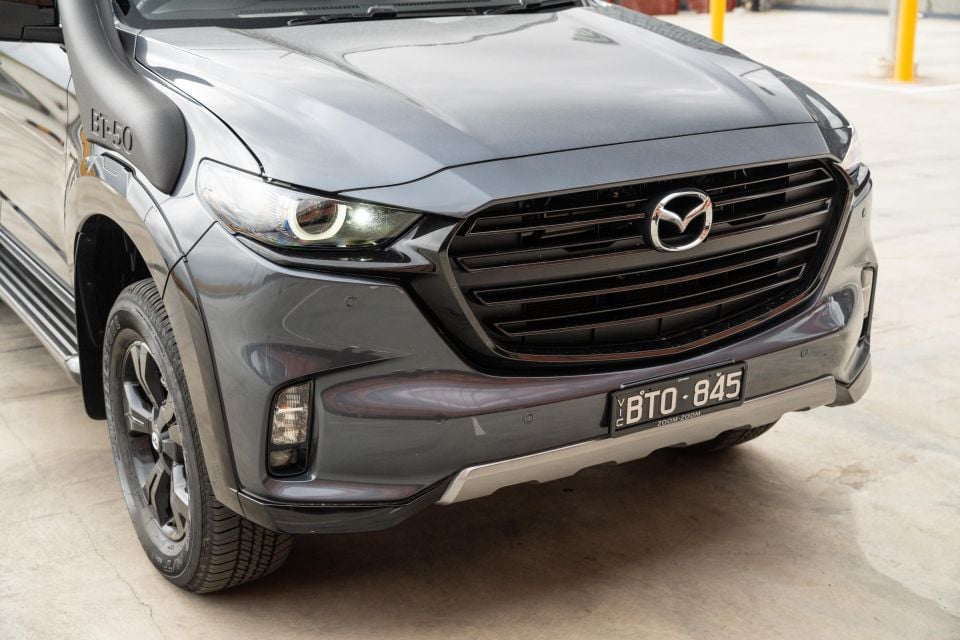



BT-50 SP highlights:

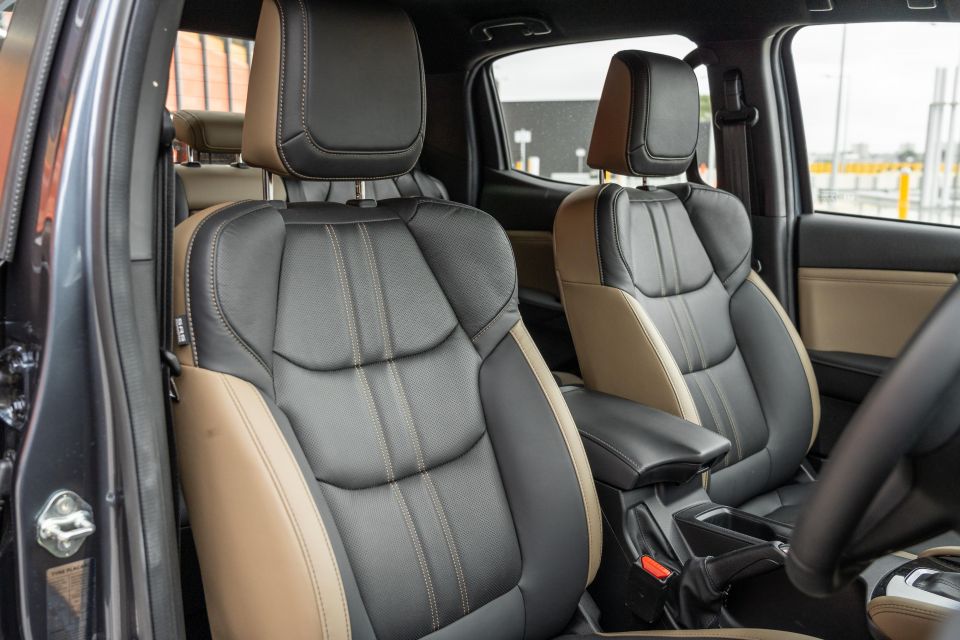
That’s in addition to features found lower in the BT-50 range, including:
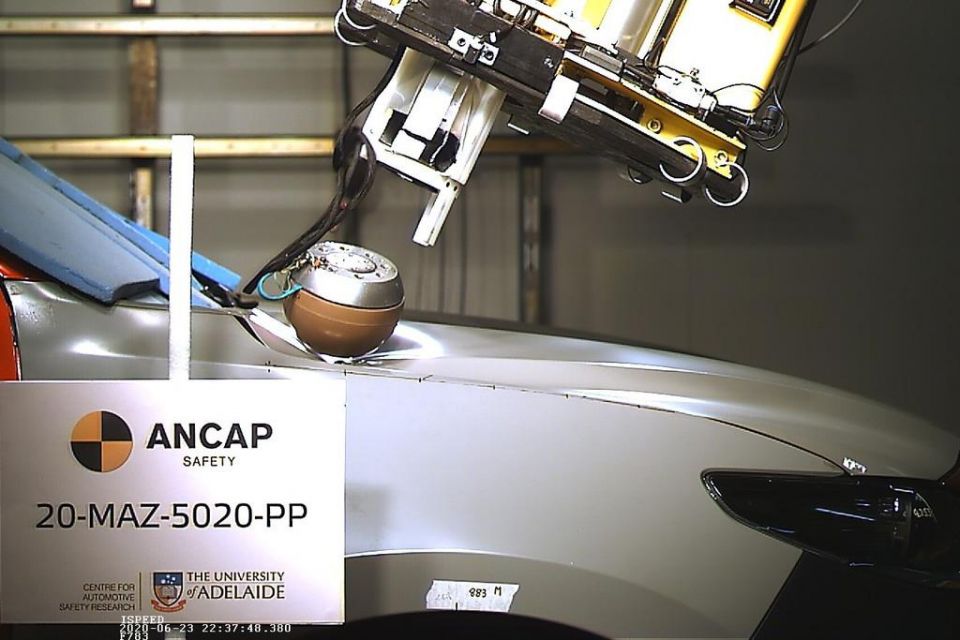
The Mazda BT-50 wears a five-star ANCAP safety rating with 2020 date stamp, based on tests conducted on the related Isuzu D-Max.
Category scores included 83 per cent for adult occupant protection, 89 per cent for child occupant protection, 67 per cent for vulnerable road user protection and 84 per cent for safety assist.
It’s worth noting the BT-50’s unique front end compared to its Isuzu twin garnered a slightly weaker pedestrian protection score (from 69 per cent).

Standard safety features include:
Automatic models also feature lane-keep assist and adaptive cruise control with stop/go.
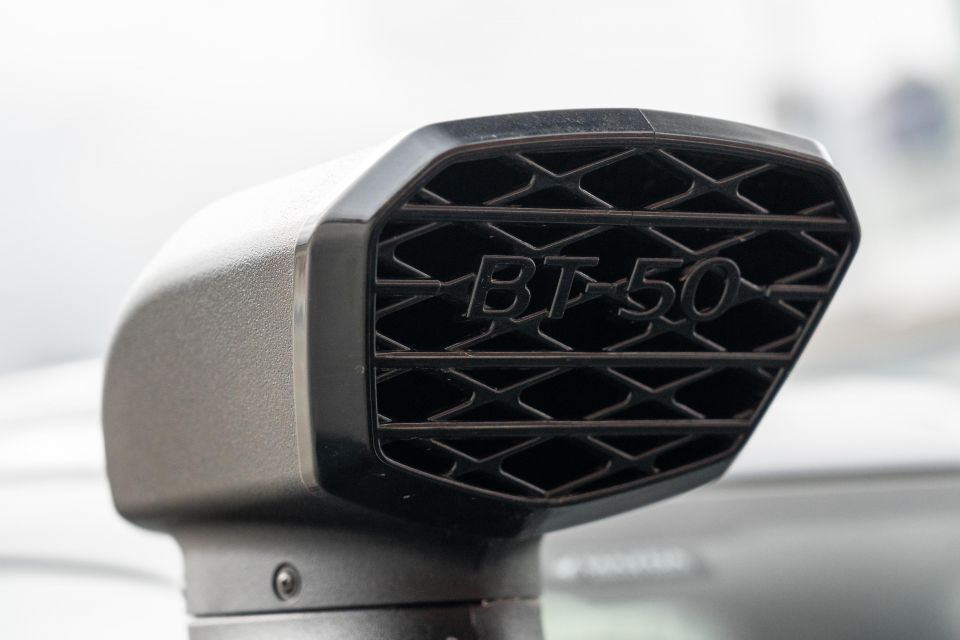
In addition to a five-year, unlimited-kilometre warranty, Mazda offers five years of capped-price servicing.
Intervals are 12 months or 15,000km – whichever comes first – and the five services are capped at $443, $409, $699, $524 and $329. That’s a total cost of $2404 over five years.
Isuzu offers seven years of capped-price servicing for its related D-Max, and over the first five years it costs $2315 to service.
Both are cheaper than a Triton, though it offers up to 10 years of capped pricing, but more expensive than a Ranger which offers only four years.

Buy your new car without the stress. It's fast, simple and completely free.

Great service from Travis and team, second time I have used this business would not hesitate to recommend them to anyone
Craig C.
Purchased a Ford Ranger in Sunshine Coast, QLD
CarExpert helped Craig save $7,224 on his Ford Ranger, now let us save you on your next new car.
Get your BEST priceThe BT-50 SP looks like no other ute – ok, ignore the rear, where its Isuzu D-Max origins are plain to see.
But up front with its blacked-out trim and inside with its striking two-tone colourway, the SP has a more sophisticated, upscale look than most of its rivals.
It has a look more befitting of an SUV, and with the heavy-duty suspension option it rides more like one too.
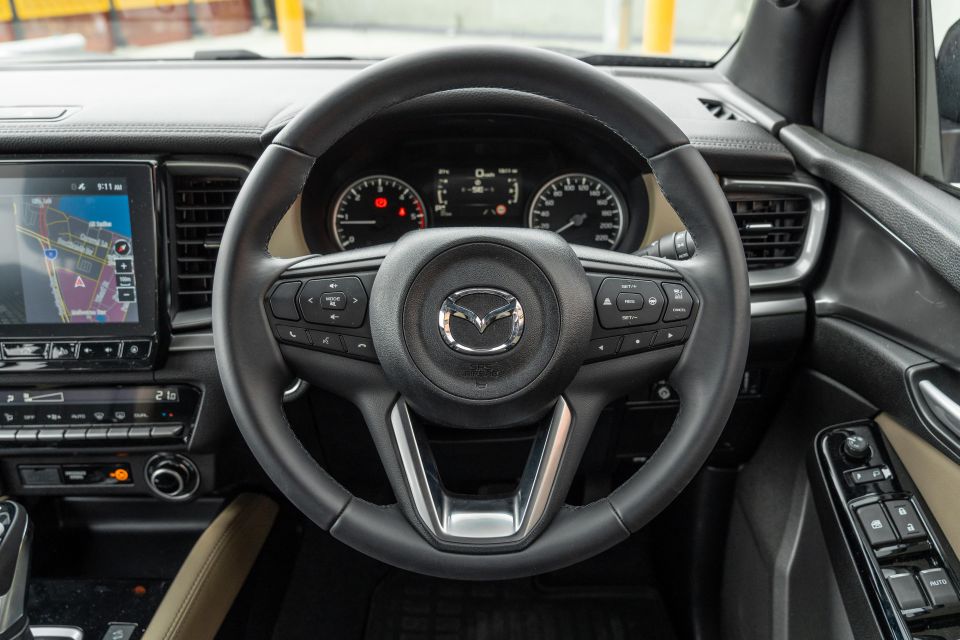
The SP trim level and the suspension upgrade represent significant premiums over the BT-50 GT. The regular BT-50 rides decently for a ute but the suspension upgrade vaults this to the top of the class in terms of comfort, which suggests the $6790 premium is good value – and, arguably, better value than the SP’s $6000 premium over a GT for mostly cosmetic tweaks.
Opting for an SP with the upgraded suspension pushes the BT-50’s price ever closer to Ranger Raptor territory, however, and the value proposition starts to erode.
That you can also get a V6 diesel-powered Ranger for this price point, with more grunt and better in-car tech, also undermines the BT-50’s appeal.
The BT-50 is still a solid ute however, even without the suspension upgrade, with a tractable turbo-diesel engine, good steering and a generally comfortable and modern cabin.

Click the images for the full gallery
MORE: Everything Mazda BT-50
Where expert car reviews meet expert car buying – CarExpert gives you trusted advice, personalised service and real savings on your next new car.
William Stopford is an automotive journalist with a passion for mainstream markets and historical automotive pieces.


Max Davies
23 Days Ago


Josh Nevett
15 Days Ago
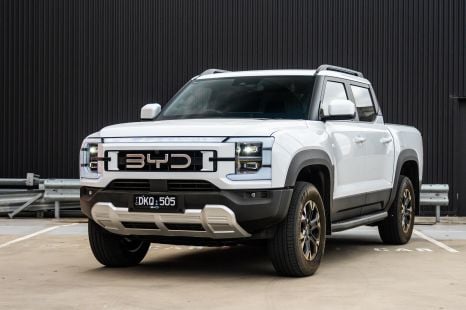

William Stopford
14 Days Ago


Max Davies
9 Days Ago
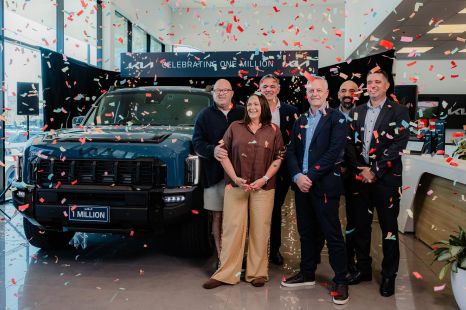

James Wong
8 Days Ago
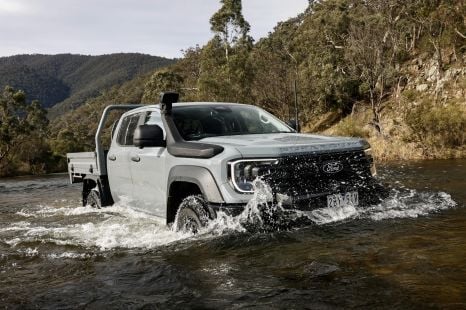

Max Davies
8 Days Ago